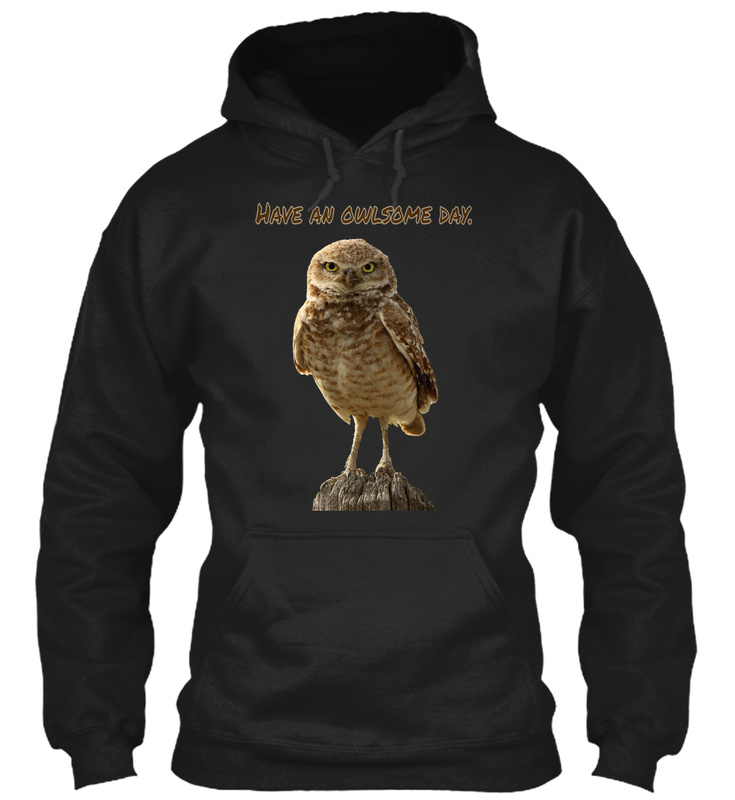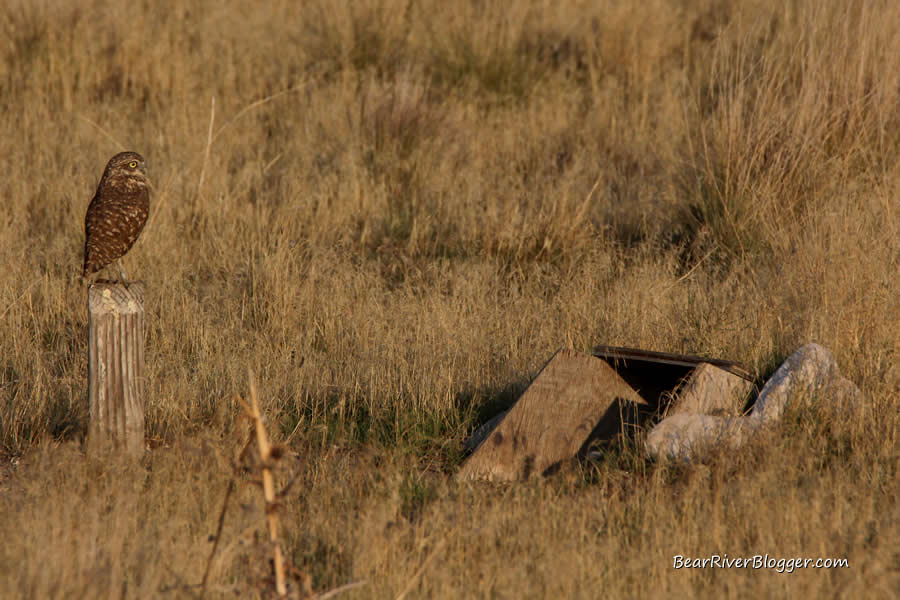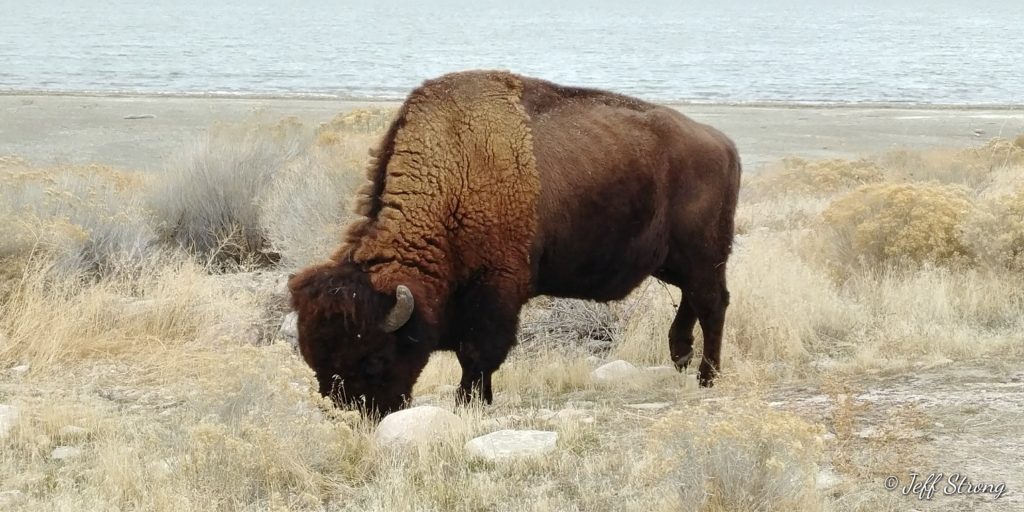Burrowing owls, you got to love them, right?
I sure do and that is why I spend countless hours each year photographing and just plain watching them whenever and wherever I can.
Antelope Island State Park is one of the best places in Utah to find, photograph, and watch the burrowing owl as numerous pairs of these small, quirky birds come to nest on the island each summer.
And to help encourage a healthy number of burrowing owls to breed and raise their young on Antelope Island, park staff have placed a couple dozen artificial burrows all over the island.
If you’re not familiar with what an owl burrow is, simply put, it’s a den-like hole in the ground burrowing owls use to nest in.
Unlike other owls, burrowing owls nest underground and take over abandoned dens from other creatures, such as prairie dogs, skunks, gophers, and armadillos.
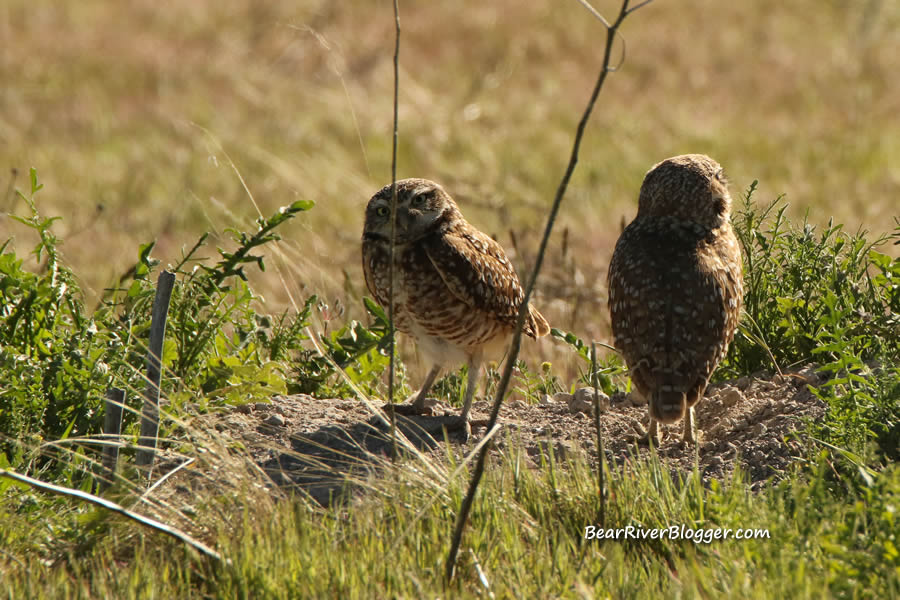
But when these previously dug dens aren’t available, artificial dens can be used in their place to help give the burrowing owl a place to nest.
I wasn’t really sure what exactly an artificial burrowing owl burrow looked like so I decided to take it upon myself to find out.
Part of the motivation to understand just what exactly is an artificial burrowing owl nest was to fill my basic curiosity about birds, meaning I love learning about nature and I try to scratch that itch whenever possible.
But another purpose, the larger purpose, if truth be told, is to take it one step beyond simple curiosity and possibly install some artificial burrowing owl nests up near the Bear River Migratory Bird Refuge on Forest Street for more bird-watching opportunities.

Yes, you read that right, I am working on a project where a couple or more artificial owl burrows will hopefully be placed somewhere on lands adjacent to the road down to the Bear River Migratory Bird Refuge auto tour route.
I already have permission from the landowner and now I just need to obtain the materials, build the nests, and place them where they need to be, but more about this ambitious project, including how readers of this blog can possibly help, in a future blog post.
My research into understanding more about what an artificial burrowing owl nest is actually made of started and ended in the same place, Antelope Island State Park, where I knew artificial owl burrows were already being used.
After contacting the park wildlife biologist, I was invited to come and see what artificial owl burrows looked like.
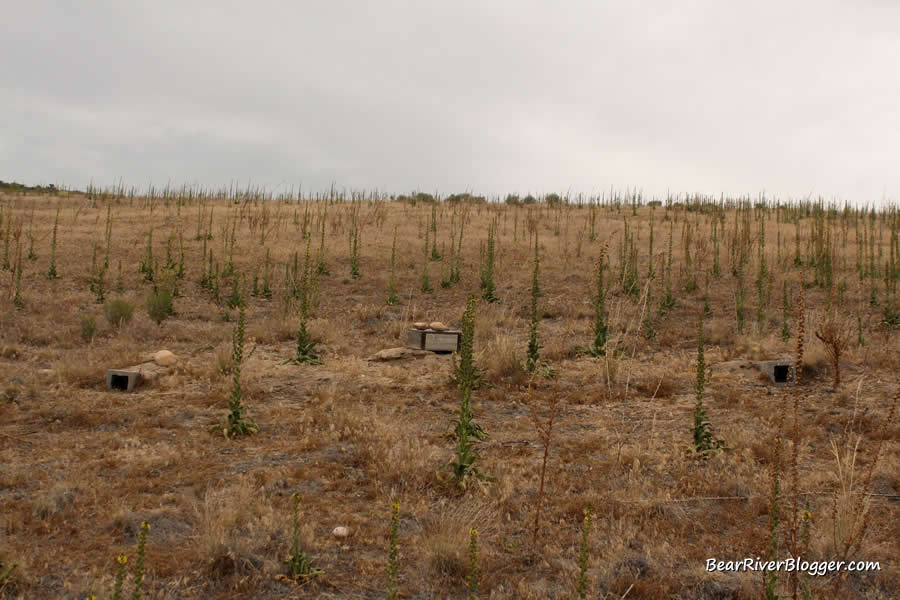
I was also able to tag along with volunteers from Hawkwatch International a few days later to check on one of the artificial burrows on the island to see how the breeding season was going and to potentially leg-band any new owlets for the year.
From what the volunteers from Hawkwatch International told me, there are about 25 artificial burrowing owl nesting sites on Antelope Island, with most of them having 2 nests per site.
One nest is typically the actual burrowing owl nest and the other is a cache nest where excess food can be stored to help feed the growing owlets.

Each artificial burrowing owl nest, made from a simple 5-gallon bucket, has two openings, one on each side that is connected by a long pipe to the entrance of the burrow.
This double entrance design allows the owls to escape the nest if a predator enters one of the tunnels to the nest, in effect, offering the other tunnel as an alternate escape route of sorts.
In order to catch the adult owls in the nest for banding, the volunteers push a long plastic pole with a plunger-like end on it simultaneously up each tunnel to encourage the owls back into the nest where the lid is removed and the birds, both owls and owlets, can safely be caught, handled, leg-banded, and put back into the nest.
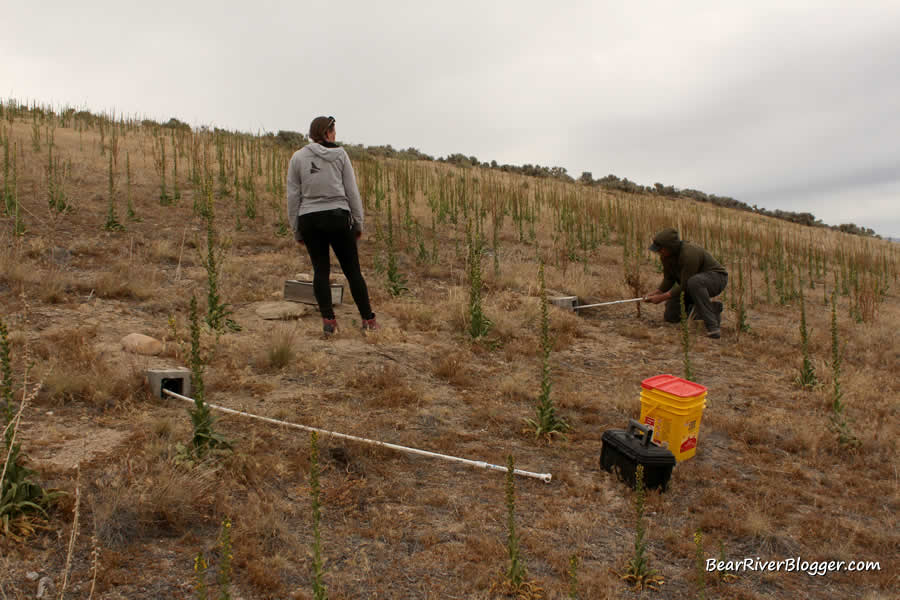
We didn’t catch any adult burrowing owls but there were 4 newly hatched owlets in the nest, way too young to tag so we promptly closed up the lid and left the nesting site.
One of the great advantages of using these artificial burrowing owl burrows is the quick and easy way biologists can check the nests and leg-band the birds, something not usually possible in natural owl burrows, by the way.
Now I want to mention one thing about the burrowing owl nests on Antelope Island with regards to the owls’ safety and breeding success, the actual locations of these artificial nesting sites aren’t given out to the public in order to keep any disturbance to the owls breeding season at bay.
If you do know where any of these nesting sites are, please respect the owls and do not approach the nests for any reason, doing so could very easily cause the burrowing owls to abandon their nest altogether,
The volunteers from Hawkwatch International are authorized and permitted by the park to visit and monitor the owl nesting sites but the nests are strictly off-limits to the general public.
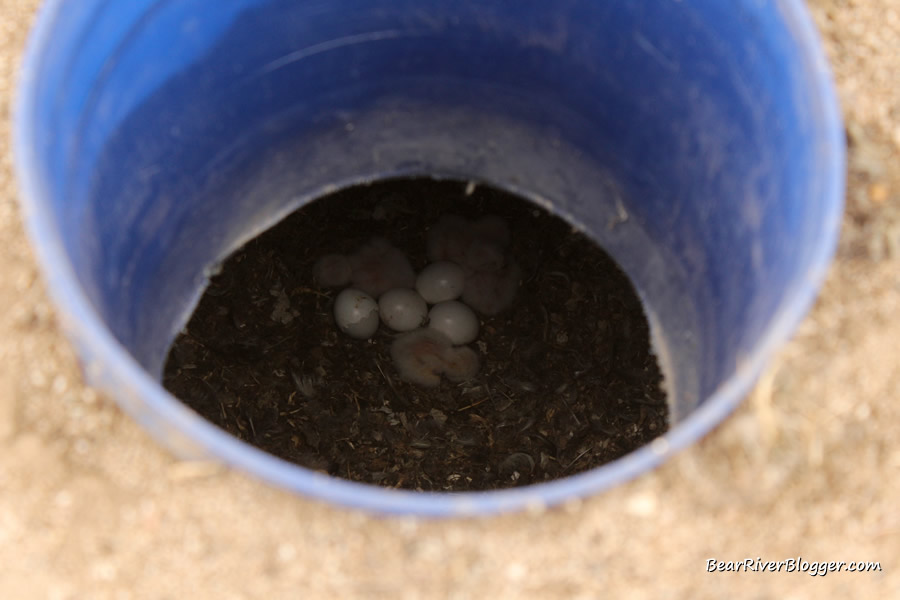
By keeping a lookout while driving the park roads, you can find burrowing owls in various locations all over the island in fairly easy viewing spots from the road, but just keep in mind there might be a nest nearby so approaching an owl for a photo or just a better view is never a good idea.
Antelope Island is one of my top go-to spots for burrowing owls each and every summer, one of the many driving forces behind my yearly purchase of an annual park pass, by the way.
This year, most likely due to the severe drought, owl and owlet numbers on Antelope Island were way down so the volunteers checking the nesting sites weren’t having great luck finding a lot of breeding success on the island.
In fact, I was told by the volunteers in 2020 six burrowing owls and 72 owlets were found in the artificial nests, but so far this year only 8 adult owls and 15 owlets have been found.
It looks like a slow year for burrowing owls on Antelope Island this breeding season, but we can always look forward to and hope for a better year next year.
If you are a bird watcher like I am, I offer you to head on over to my subscribe page and sign up for email notifications for future blog posts.
I appreciate your readership and support of the website where I try and inform and enlighten about the interesting things about birds and nature I find on my travels.
You can help support this website by both taking a look at one of our online stores for any nature-related gifts you might be in the market for as well as sharing any posts you find particularly interesting on your favorite social media outlet.
Birding Apparel
Use promo code save20 for 20% off this and all items in our online store Bird Shirts and More. “Have An Owlsome Day” hooded sweatshirt
